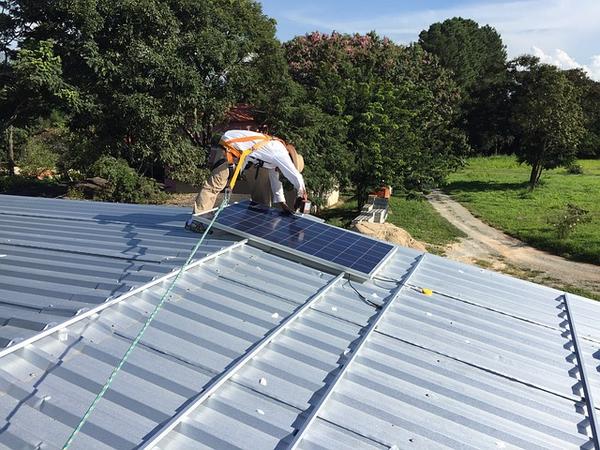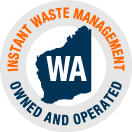7 Tips for Sustainable Home Building and Renovating
04 September 2015

Sustainable Home Building Events This Month (Sept 2015)
September is a big month for sustainable building and renovations in Perth! On 13th September we have Sustainable House Day, where you can take a tour of some wonderful working examples of sustainable homes in the Perth Metro Area. To help you get inspiration from as many of these innovative homes, Solar Dwellings has organised a bus tour, with Josh Byrnes as the guest speaker. To find out more about this tour email shd@solardwellings.com.au.
Then we also have World Green Building Week coming up this month, from 21-27 September. We’re getting involved by teaming up with the Green Building Council of Australia to offer a tour of our Waste Recovery Facility here in Bayswater, where we process over 200,000 tonnes of construction and demolition waste every year! If you would like to attend our tour to find out what happens to construction waste once it leaves your home or site, you can find out more over on the Green Building Council Australia website or RSVP to jake@instantwaste.com.au! It takes place on Tues 22nd September at 10:30-11.30 am at our Materials Recovery Facility in 50 Clune St, Bayswater.
And to help you do your part we have also put together these tips for sustainable home building and renovating!

Consider Waste Management Carefully
Of course we would have to put this as number one on our list! But it is absolutely vital to reduce the impact of your building or renovations on the environment. Make sure that you are selective when you choose your skip provider. Whether you are building a new home or renovating your old one, there will be waste rubble, bricks, timber and metal. Some waste management companies simply take skips directly to the dump for disposal, while others (like us!) have material recovery plants where they recycle what they can, and take only what is necessary to the dump. Instant Waste is one skip provider that recycles whenever possible. You can even take a look behind the scenes at what happens to your waste once we take it!
Work with a Green Contractor
Working with a green contractor may seem obvious, but how can you be sure the contractor didn’t adopt the language without the credentials? A green contractor will not only be familiar with Australia’s rules and regulations, but they will have certifications from the Australian Housing Industry, such as GreenSmart certification or training.
Use Sustainable Building Materials
Every part of your house like counters, cabinets, insulation for the flooring, your roof material, etc. should come from environmentally friendly products which utilise renewable materials. Consider the toxicity levels of materials as well. For example, natural flooring can eliminate VOCs and are more likely to be biodegradable.
Smaller is Often Better
It is much easier to build a small home with eco-friendly techniques. A large home will not only cost a great deal to heat and cool; it will use more resources. Focus on design when creating floorplans, so that every square inch is utilised. Remember, the Australian climate allows for many months of outdoor enjoyment, and creating outdoor living spaces will use fewer resources and provide additional space for friends and family.
Utilities
Consider environmentally friendly power sources, such as solar panels and hyrdronic heating. Check to see if your electricity retailer offers GreenPower, an option to power your home with renewable energy sources.
Proper Insulation
Insulation is an important thing you need to consider when you are building a sustainable home. Approximately 50% of your home’s energy consumption is from heating and cooling. Heat loss occurs when there are air leaks such as around doors, windows, and duct work. Don’t let your efforts to heat and cool your interior spaces be wasted because of improper insulation. Insulating correctly will reduce your energy consumption and your electricity bills. Consult with your home builder to ensure they are utilising an expert insulation contractor.
Location
When you are building or renovating, it’s important to evaluate the compass orientation, the water flow and the direction that high-activity areas face.
Depending on where you live in WA, you might want to avoid creating rooms with windows facing the sun at high-heat times of day to keep your home cool without need for A/C, whereas in other areas you may want to take advantage of the warmth of the sun to heat your home. Or other areas again, you may want to position windows to catch the sun’s rays to heat your solid mass flooring in the winter, but install louvres, screens or awnings to block the sun in the summer months to keep the indoors cool. This is what is known as passive solar design – when you want to leverage the sun’s rays to heat your home at certain times and not in others, and when done right it is one of the cleverest ways you can make your home greener. This is a great resource which can help you learn more about WA’s different climate zones and where you home fits in to make the most of natural heat.
Other things you can do would be to plant gardens in areas where water flows naturally. If possible, try to find a location where public transportation is nearby or where there is a grocery store within walking distance to minimise the use of your vehicle.
Building a green home doesn’t have to be limited to using the right supplies and contractors. Details like backyard design and taking advantage of government rebates for sustainable living can also be part of the process.









